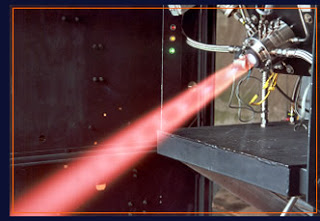

| Visitors Now: | |
| Total Visits: | |
| Total Stories: |

| Story Views | |
| Now: | |
| Last Hour: | |
| Last 24 Hours: | |
| Total: | |
Progress on the Vortex Rocket Engine
From
Regular rocket engines get incredibly hot, reaching temperatures upwards of 3,000C (5,400F) or more, hot enough to melt the metal chamber in which the rocket fuel mixes with oxygen and burns. At these extremes, even rockets with sidewalls made of heat-resistant superalloys would fail catastrophically.
Orbitec’s alternative approach keeps the hot burning gases away from the chamber surfaces altogether. The company’s patented designs create a cyclonic swirl, or vortex, of fuel and oxygen that holds the searing gases and fumes in the very centre of the cylindrical combustion chamber, away from the vulnerable sidewalls.
“Our vortex generator eliminates the high temperatures at the inner surfaces of the engine,” says Martin Chiaverini, principal propulsion engineer at the firm. “You can touch the exterior during lab-test firings and not get burned.”
The vortex, or swirl, is produced by placing the oxidiser nozzles at the base of the combustion chamber and aiming them tangentially to the inner surface of its curving walls. This produces an outer vortex of cool gases that spiral up the walls forming a protective, cooling barrier. When this meets the top of the chamber it is mixed with rocket fuel and forced inward and down, forming a second, inner, descending vortex in the centre of the chamber that is concentrated like a tornado
Parabolic Arc covered the October launch.
See more and subscribe to NextBigFuture at 2012-12-21 15:30:53 Source: http://nextbigfuture.com/2012/12/progress-on-vortex-rocket-engine.html
Source:



